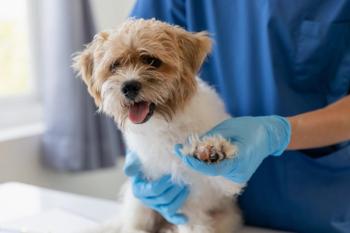
Commentary: Student debt is an academic problem
Educational debt is a trap of veterinary colleges own making, says this longtime academician.
(Getty Images)Many leaders in higher education will instinctively resist the suggestion that student debt is an academic problem. They will insist that declining government financial support is the cause. Further, they will add that easy student access to federally backed educational loans has enabled colleges and universities to raise tuition and fees excessively. They will also point out that low entry-level veterinary practice salaries make high educational debt a particularly heavy burden for a new veterinary graduate.
All of these assertions are undeniably true. Nevertheless, veterinary colleges must accept that controlling educational costs is largely their business, irrespective of the various contributing elements.
As higher education fell on hard times, the veterinary colleges decided, as academic institutions always do, that the only answer to budget shortfalls was more money. There has been a threefold increase in the cost of attending college since the mid-1980s. Nearly 90 percent of veterinary graduates have educational debt, and according to
The
A budget-enhancing device used by universities is the generation of philanthropic revenue. Certainly, boosting private income is an excellent strategy, though it will take massive fundraising efforts to significantly offset the cost of veterinary education.
Instead of continually demanding more and more money, colleges should take deliberate steps to reduce their spending. Opportunities to cut down on costs may be found in the DVM curriculum delivery, facilities management, faculty and staff appointments, and administration, among others. Additionally, students' out-of-pocket costs could be significantly reduced by shortening pre-veterinary education, perhaps from four to two years, as suggested in a letter by John Baker, DVM, dean of the College of Veterinary Medicine at Michigan State University, published in the Journal of the American Veterinary Medical Association in 2017. Other efforts such as requiring financial literacy education and improving career and wellness counseling would also be beneficial.
Resistance to change is inevitable. Nevertheless, we need to be clear-eyed and tough-minded in assessing what's happening to veterinary education and the veterinary profession and why. We cannot expect to solve the student debt problem using the same thinking that got us into it, and we will not meet society's important animal health needs by disabling the graduates on whom the veterinary profession's future depends. Veterinary colleges must have the courage, humanity and humility to control the tuition-debt problem before it is too late. It is hard to imagine anything more consequential or urgent.
Dr. Peter Eyre is professor and dean emeritus at the Virginia-Maryland College of Veterinary Medicine in Blacksburg, Virginia.
Newsletter
From exam room tips to practice management insights, get trusted veterinary news delivered straight to your inbox—subscribe to dvm360.




